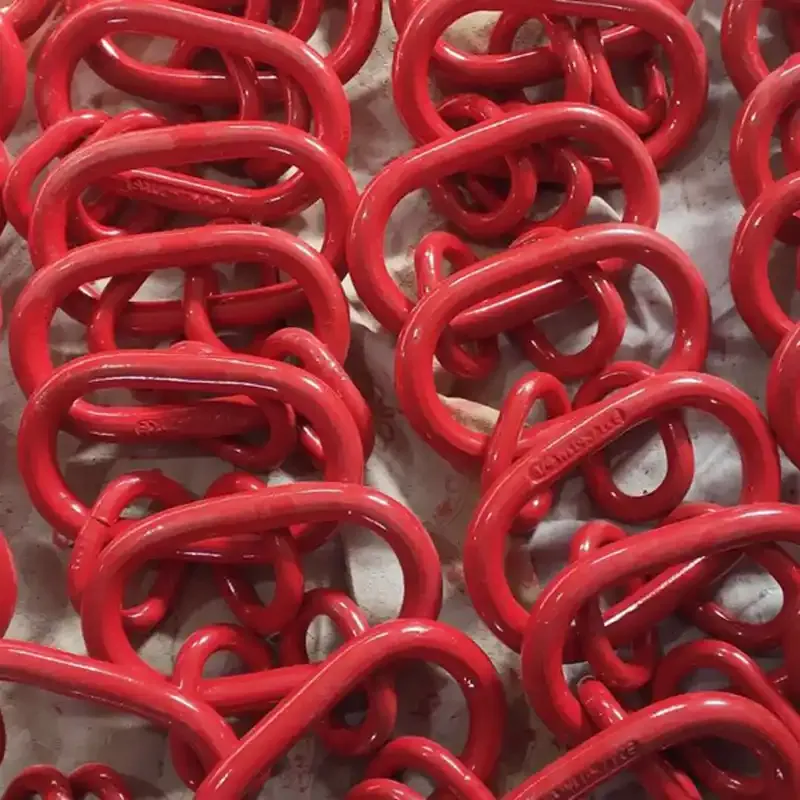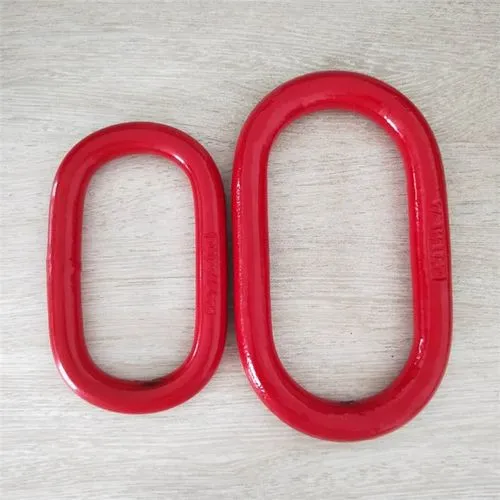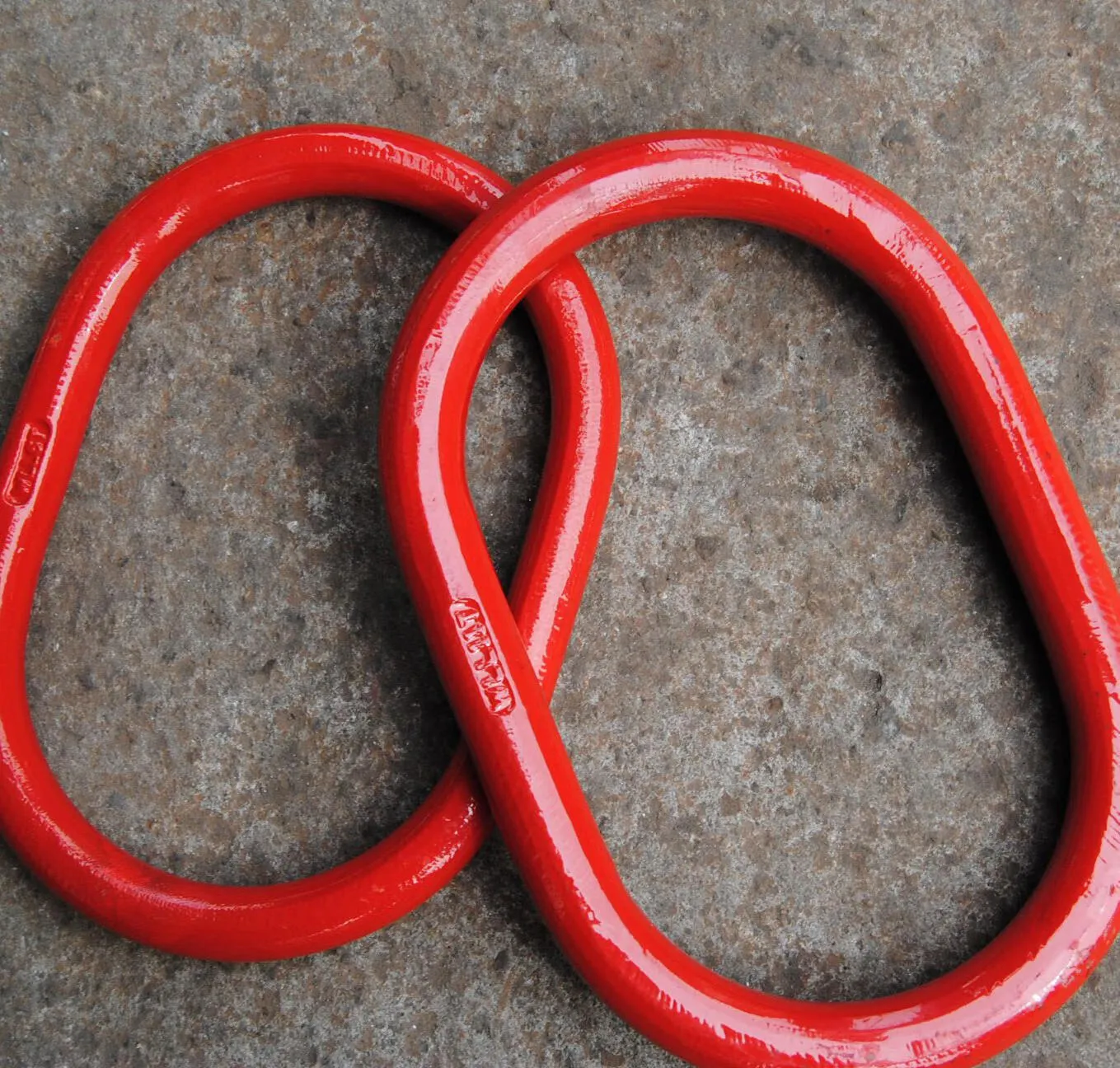خبریں
اپریل . 28, 2025 14:47 فہرست پر واپس جائیں۔
Chain Master Link Types for Different Applications
When it comes to lifting, rigging, and industrial applications, selecting the right chain master link types is crucial. A master link is an essential component used to connect lifting chains, wire ropes, and hooks in various configurations. Choosing the appropriate type ensures maximum strength, load distribution, and safety.

There are several chain master link types, each designed for specific uses. The most common type is the standard oval master link, widely used in single and double-leg sling assemblies. For more demanding applications, master link sub-assemblies, also known as quad master links, are designed to connect multiple sling legs and provide better weight distribution.
Welded master links are another popular option among chain master link types. These links are permanently closed and offer superior strength, making them ideal for heavy-duty lifting. On the other hand, mechanical master links feature a removable pin, allowing for quick adjustments and reconfigurations in rigging setups.
Selecting the right chain master link types depends on the load weight, working conditions, and connection requirements. Ensuring that the master link meets industry standards, such as ASME and OSHA regulations, guarantees safety and performance.

How to Use a Chain Master Link Size Chart for Proper Selection
Choosing the correct size for a master link is essential for ensuring safe and efficient load handling. A chain master link size chart provides the necessary dimensions, weight capacities, and compatibility with different chain sizes. Understanding how to use this chart can prevent overloading and potential failures in lifting operations.
A typical chain master link size chart includes key measurements such as inside length, inside width, and overall diameter. These dimensions help determine whether a master link is compatible with a specific sling, shackle, or hook.
Another important factor in a chain master link size chart is the working load limit (WLL). This value indicates the maximum weight the master link can safely handle under normal conditions. Exceeding this limit can lead to structural failure, making it crucial to match the WLL with the intended lifting application.
For industries that require frequent heavy lifting, high-strength alloy steel master links are recommended. By consulting a chain master link size chart, users can ensure they select the right link for their rigging needs, avoiding potential hazards and inefficiencies.

Breaking Down Master Link Dimensions for Better Performance
Understanding master link dimensions is key to optimizing lifting and rigging operations. The size and shape of a master link affect its load-bearing capacity, compatibility with other rigging components, and overall safety.
The most important master link dimensions include:
- Inside Length (L):Determines how much space is available for attaching multiple slings or hooks.
- Inside Width (W):Ensures compatibility with shackles, hooks, or chain connectors.
- Diameter (D):Affects the strength of the master link and its ability to withstand heavy loads.
Different master link dimensions are required for single-leg, double-leg, and multi-leg sling configurations. Larger master links with increased diameter and width are used for heavy-duty applications, while smaller ones are suitable for lighter loads.
For precision in selecting the right master link dimensions, industry professionals refer to manufacturer specifications and safety guidelines. Ensuring the correct fit reduces stress on the master link and enhances the durability of the entire lifting assembly.
Choosing the Right Master Link for Your Industry Needs
Selecting the appropriate master link is vital for safe and efficient operations in industries such as construction, shipping, and manufacturing. With various options available, understanding their differences helps in making informed decisions.
A master link is primarily used in chain sling assemblies, allowing for secure attachment of hooks, ropes, and other lifting accessories. Heavy-duty master links are manufactured from high-strength alloy steel to endure extreme loads and harsh conditions.
For marine and offshore applications, corrosion-resistant master links made from stainless steel or galvanized steel are preferred. These materials provide enhanced durability and resistance against environmental factors like saltwater and moisture.
Additionally, choosing a master link with the correct size and weight capacity ensures compliance with safety regulations. Investing in high-quality master links from reputable manufacturers guarantees long-term reliability and performance in any lifting operation.
Forged Master Link FAQs
What are the different chain master link types?
The most common chain master link types include standard oval master links, quad master links (sub-assemblies), welded master links, and mechanical master links. Standard oval links are used for basic lifting applications, while quad master links are designed for multiple-leg sling assemblies. Welded master links offer superior strength, and mechanical links allow for reconfiguration in rigging setups.
How do I read a chain master link size chart?
A chain master link size chart provides information on dimensions such as inside length, inside width, and overall diameter. It also includes the working load limit (WLL), which indicates the maximum weight the master link can handle. By matching these values with the chain and lifting requirements, users can ensure a secure and compatible rigging setup.
What factors determine master link dimensions?
Master link dimensions are determined by factors such as load capacity, chain compatibility, and rigging requirements. The inside length and width dictate the number of attachments it can accommodate, while the diameter affects its overall strength. Different industries and applications require specific master link dimensions to ensure safety and efficiency.
How do I choose the best master link for my needs?
To select the best master link, consider factors such as material, load capacity, environmental conditions, and compliance with safety standards. Heavy-duty alloy steel master links are ideal for industrial lifting, while stainless steel links are better for marine applications. Always check manufacturer specifications and safety certifications before purchasing.
What safety precautions should I take when using a master link?
Ensuring master link safety involves regular inspections, proper load distribution, and compliance with weight limits. Avoid exceeding the working load limit (WLL) specified in the size chart, and check for signs of wear, corrosion, or deformation. Using high-quality master links and following safety guidelines minimizes the risk of failures and accidents.
-
Small components of lifting ring nuts with large load-bearing capacity
خبریںNov.24,2025
-
Flower basket bolts inject stable strength into your project
خبریںNov.18,2025
-
Although the lifting ring is small, its function is enormous
خبریںNov.12,2025
-
Lifting shackle: The indispensable "safety connecting ring" in lifting operations
خبریںNov.05,2025
-
Full analysis of lifting chain technology and application standards
خبریںOct.31,2025
-
Card head usage guide
خبریںOct.28,2025
